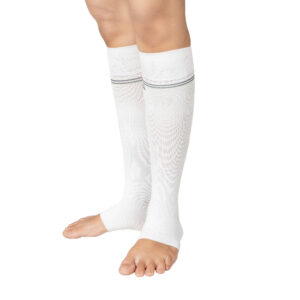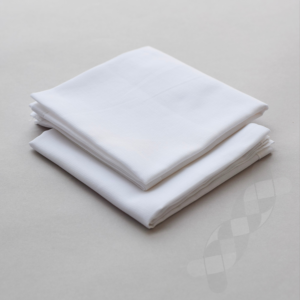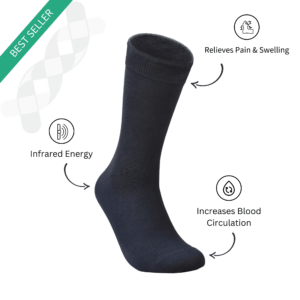Diabetics are prone to a range of foot problems. Foot ulcers, varicose veins, pain, redness, swelling, irritation, foot corns, bunions, etc are few of the many symptoms a diabetic tends to face. A research conducted by International Diabetes Federation revealed that a diabetic is gets their lower limb or part of their lower limb amputated in the world every 30 seconds! This is a reminder to all of us that we just aren’t loving our feet enough.
In this article we will look at a few ways to care for your feet and avoid diabetes related foot problems.
Wash, Dry, Moisturise and Inspect
If there is one thing you should take away from this article, it should be these action words:
- Wash
- Dry
- Moisturise
- Inspect
It should be a part of your everyday routine. Washing your feet with mild soap, rids your feet from sweat and any chances of bacterial growth. Drying also rids the chances of bacterial growth. A mild moisturiser will protect your feet from rashes and irritation and lastly you must inspect your feet everyday to make sure they don’t have any cuts, corns or bruises. These simple steps will save you a lot of trouble.
Toenails
Ingrown toenails are a problem, especially when diabetics are prone to infection. Any cut or wound, can lead to infections, and ingrown toenails are no exceptions. Nails grow at different rates and they tend to curl as they grow longer, thus increasing the chances of an ingrown nail. You can cut your nails whenever it’s too long, but make sure you keep an eye out for them. Check them at least once a week for their length and breakage. To make things easier, cut your nails after a bath. This makes them softer and easier to manage. Cut them straight. Do not cut from the edges as it may grow in different directions.
Shoes often lead to ingrown nails too. So, keep an eye out for comfortable footwear that are not too tight around the toes. If you have an ingrown toenail, make sure to keep it clean and dry. Treat it with an antiseptic for a day. If you see no improvement in 24 hours, consult your doctor.
Foot Corn Filing
Corns or calluses are essentially dead skin that collectively forms a hard surface. Friction, chaffing, foot pressure and uncomfortable footwear are the main reasons for foot corns and though they may not bleed or be infectious, they do make it difficult to walk. The corn can press against your bones and tissue and lead to a lot of pain and discomfort.
Corns are nothing but an inconvenience. The best way to live with a corn is by getting rid of them altogether. The process is gradual and would take you a few days. After washing and drying your feet, use a pumice stone to remove dead cells. This will soften the corn and make it easier for you to walk. Corn caps are also helpful. They contain a small dose of Salicylic Acid which loosens the corn from healthy skin. However, if your corn does not come out after using 4-5 corn caps you must have a word with your doctor.
Footwear
As you saw above, uncomfortable footwear can lead to a lot of problems. You need to get the right each time. Diabetics don’t have time to ‘break in’ to new shoes. We are so prone to infections that a harmless shoe bite might take us to the hospital. Therefore, go for shoes that do not take long for you to get comfortable with. Sport shoes are the best in this department. They are covered, breathable, absorbent and comfortable. Buy pairs that are most suited for your lifestyle. So, if you don’t do intense exercises, do not buy sprinting shoes. Rather, go for walking and jogging shoes.
If you travel back and forth from work in office shoes/heels, carry a comfortable pair with you for the commute. You can change into formals once you reach office. Talk to your seniors if you have a strict dress code at your workplace. Explain to them that you are prone to foot problems and may wear comfortable footwear if the need arises. If you already have a footsore, corn, or any kind of infection, tight footwear can prolong the healing.
Diet and Nutrition
Believe it or not but your diet can impact your foot health. Some products tend to cause swelling and high blood pressure, none of which are good for diabetics. If you are constantly having foot problems, have a thorough discussion with your dietician. Tell them about your current diet. They may identify what is causing the foot problems. They may also suggest a few blood tests and chalk out an ideal diet for you.
Extreme Temperature
Extreme heat or cold can also damage the nerve cells on your feet. This is worse when you already have peripheral neurosis and therefore cannot sense extreme temperatures. A person without peripheral neurosis will easily withdraw their legs if the water is too hot, but will not notice it, thus exposing yourself to dangerous temperatures. You can take some precautions to avoid damage from extreme temperatures. If you soak your feet before cutting nails or smoothening corns, you should check the water temperature on your elbow. Secondly, when its too hot or too cold, always wear protective footwear so that your feet are not exposed to extreme temperatures.
Blood Circulation
Most of the problems associated with your feet occur because of a lack of blood supplied to your feet. So, you must increase blood circulation to keep away foot problems. Massage is a good way to stimulate blood flow. Syounaa Diabetic socks are also perfect for diabetes because they are made to increase oxygen around your feet naturally.
Timely Check-up
Yes, if you want to keep your feet healthy and safe from problems, you must ask a professional to have a look at them from time and again. Doctors can spot problems before they become severe. They have access to equipment to treat conditions in time so that you don’t have to worry about being the next amputee.
So, here are some tips that will protect your feet from any complications associated with diabetic feet. We hope you found this helpful. Be sure to share your experience with us, we are always happy to hear from you.




























